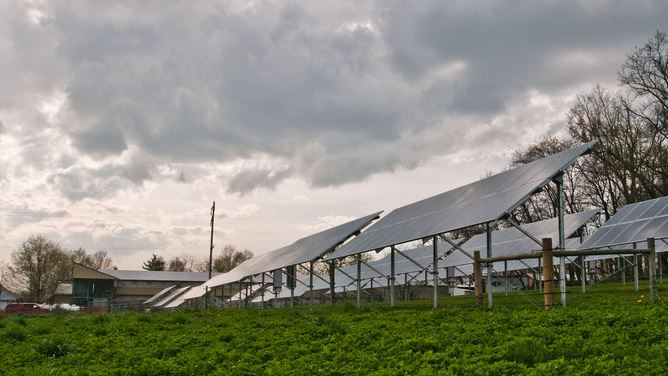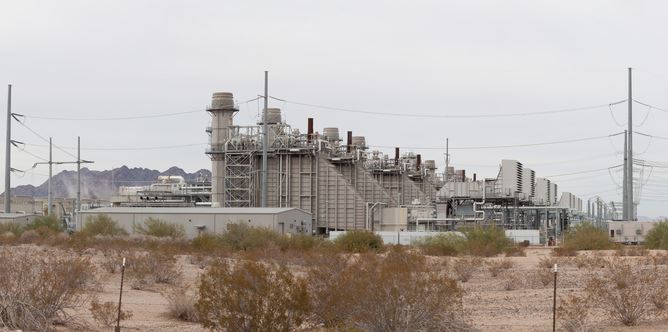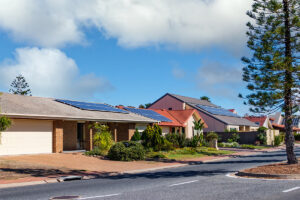Richard Flarend, Pennsylvania State University
The cost of solar energy continues to fall, so it is no surprise that more people are adopting solar.
This rapid growth of rooftop solar, however, has led many electric utilities to try to apply the brakes. A number have lobbied to change the “net metering” policies that credit consumers for the excess solar power they generate. Does this make sense?
Solar net metering works akin to a bank account. You “deposit” unused energy (kilowatt-hours) generated by your system during the day onto the electric grid – that is, during those times when your solar panels generate more power than your home consumes. You then “withdraw” energy at night or when your system is not generating enough electricity.
Also like a bank account, your deposited energy is not just sitting in a vault – other utility customers who need electricity use your excess solar power at the time of deposit. When you withdraw the energy, it is generated by a power plant for you.
As simple as this process sounds, it has generated a huge debate within the electric power industry.
The electric industry makes an appealing argument that utilities should charge net metering customers for all these energy deposits and withdrawals. In promoting a change to the net metering law in Minnesota, for example, State Representative Pat Garofalo said solar customers are “able to use the grid without charge and this means higher rates for other consumers.”
On the other side of the argument, there is a compelling case that says utilities should let solar customers use the grid at no charge or even that utilities should provide incentives to solar customers. After all, solar photovoltaic systems produce the most during long sunny summer days when the demand for electricity is high and it costs more money to generate power. Thus, according to this argument, the excess solar generation deposited onto the grid during the day is more valuable than the electricity withdrawn at nighttime.
So which logic is more compelling? Is net metering a burdensome requirement or is it beneficial to everyone?
Last year I heard the president of a midwestern utility speak about this burden solar created, and his logic seemed very good. So I looked at the electricity production data that were automatically collected by my own rooftop solar panels and compared it to the peak and off-peak electric rates that I pay. I then decided to systematically dig into the numbers for a large region in my home state of Pennsylvania and do a more scientific analysis – and the results surprised me.
Varying price for electricity
Pennsylvania has a deregulated market in which utilities distribute electricity, rather than produce it. Most customers choose and pay a separate supplier for the generation of electricity from a power plant. When customers don’t make this choice, then utilities will purchase wholesale power – the cost that utilities pay to power generating companies – and then resell this power to consumers at a retail price.
During times of high demand, the price for power on the wholesale market goes up due to supply and demand. It can even go up by over 1,000% within the same day or week.

Utilities and electric suppliers make daily predictions for the amount of energy needed by all customers so that electricity can be generated, purchased and placed onto the grid. A very hot summer day, for instance, will require more energy to meet high air conditioning loads. Using short-term weather forecasting, one can also project the impact of solar energy on the overall demand for electricity on the day-ahead market.
I looked at the hourly price data for the day-ahead market for wholesale energy in the Pittsburgh region. And then I looked at solar production data for many photovoltaic arrays for this same region.
Using these data and a few assumptions about when a solar customer uses electricity, I found that the wholesale price for electricity deposited onto the grid is 20% greater than the wholesale price of electricity withdrawn from the grid at night or on bad weather days. In other words, solar energy allows suppliers and utilities to realize savings and increase profit margins, even though the solar customers are purchasing less electricity overall.
True value of solar?
But how would we quantify the full value of solar? The best way is to analyze the impact of solar that is not already priced into the market.
First, we assume that the price for a given demand remains constant. Then create a scenario or model in which a large amount of solar energy is placed onto the grid. This would create a noticeable decrease in the current daytime demand for electricity and a corresponding decrease in the price of electricity during these daytime hours.
For example, based on 2013 data, if Pennsylvania had solar energy provide 5% of all its electricity, a utility and its associated electric suppliers would see, according to my research, savings of US$60 million per year for a region of 600,000 customers. (Five percent is quite a large amount of solar for Pennsylvania, where solar energy provides about 0.1% of electricity now.) At the same time, the utility and suppliers would see a decline in retail revenue of $45 million since solar customers would not be paying as much for their electricity. Amazingly, the savings are greater than the lost revenue.

For a typical utility or supplier, the net savings, according to my calculations, are $25 per customer per year. This is savings for every customer, not just solar customers. The few solar customers would be responsible for lowering the cost of electricity for all customers.
These savings are based only on the generation of electricity. There are additional similar savings for the distribution of electricity that I have not yet addressed. Just as it costs more to generate electricity when the demand is high, it also costs more to distribute electricity when the demand is high. In fact, sometimes it can cost so much more that utilities are willing to pay customers not to use electricity.
I should stress that even with solar energy, we need utilities and power generators. There will always be an infrastructure that needs to be supported and thus utilities and generators need to maintain a dependable revenue. However, as long as solar provides more savings than the decrease in revenue, there should be no problem for the electric industry. In fact, the electric industry could reinvest these additional profits to make the infrastructure more suitable for even larger amounts of solar.
Solar to the rescue?
If solar energy were adopted nationwide to 5%, 10% or even higher levels, consumers will need to rethink their use of electricity. Now, regulators create policies in many states to encourage customers to lower their use of power during peak hours, shifting it instead to the evening. Instead of shifting electric use to nighttime hours, consumers would be encouraged to shift their use to late morning and midday hours.
Rather than be most expensive, power would be cheapest during the day. At that time, generators and utilities would then have a new complaint: “Solar energy provides only the least valuable energy during the day, and we have to give back electricity to these customers at high nighttime rates, how unfair!”
When that time comes, generators and utilities will need to be reminded that their daytime costs would have been astronomically higher if not for solar energy, and even nighttime rates would have been higher if not for solar.
Updated to remove comparison of Pennsylvania’s solar generation to California’s for clarity.
![]()
Richard Flarend, Associate Professor of Physics, Pennsylvania State University
This article was originally published on The Conversation. Read the original article.









